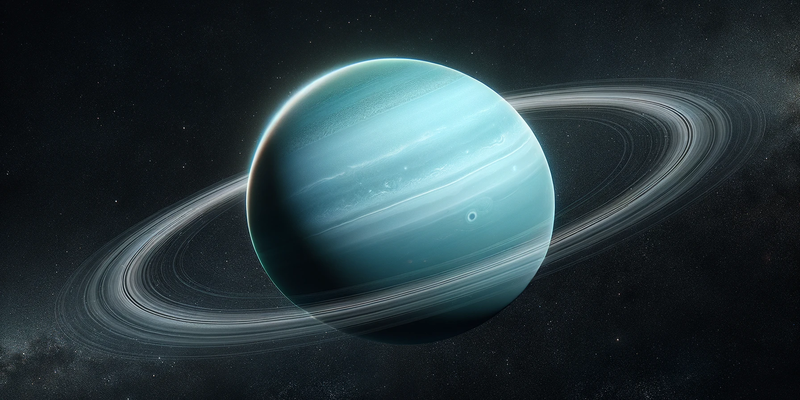
NASA is gearing up for a mission to explore Uranus and its mysterious system, aiming to unveil the secrets of the ice giant and its moons. Despite being one of the least explored planets in our solar system, Uranus harbors intriguing phenomena like powerful winds, a peculiar magnetic field, and a set of 27 moons that are captivating planetary scientists worldwide.
Why Uranus? It’s Elementary, My Dear Space Fanatics!
Currently, Uranus and Neptune hold the unfortunate title of the least explored planets in our solar system. While the Voyagers droned by in the 1980s, offering us tantalising glimpses, a dedicated mission is long overdue. Here’s what makes Uranus so darn interesting:
- Unleashing the Power of Ice: Unlike the rocky planets closer to the sun, Uranus is a swirling world of “icy” fluids, encompassing a rocky core. This unique composition sets the stage for exotic weather patterns and atmospheric phenomena waiting to be unraveled.
- Winds of Fury: Voyager data hinted at ferocious winds raging on Uranus, reaching supersonic speeds. A descent probe could plummet into this tempestuous atmosphere, directly measuring these winds and providing valuable insights into the planet’s interior workings.
- Magnetic Marvels: Uranus boasts a bizarrely tilted magnetic field that scientists suspect fuels its dazzling auroras. An orbiter would spend years circling the planet, gathering data on this magnetic oddity and the auroral displays it generates.
- Moonlighting Around the Moons: With 27 moons orbiting Uranus, there’s a whole celestial family waiting to be explored. The mission could focus on intriguing moons like Titania, Oberon, and the strangely dark Phoebe, offering clues about the formation and evolution of the Uranian system.
Challenges Abound, But the Rewards are Out of This World
Of course, venturing into the realm of the ice giants isn’t without its hurdles. The sheer distance – Uranus is a whopping 19.8 astronomical units (AU) from the Sun, compared to Earth’s cozy 1 AU – presents logistical challenges. Additionally, the price tag for such an ambitious mission could reach a cool $4.2 billion. The European Space Agency (ESA) has also expressed interest in collaborating on an ice giant mission, which could pave the way for international scientific cooperation.
However, there are silver linings shimmering in the cosmic dust. The recent success of commercially launched rockets like the Falcon Heavy has opened doors for cost-effective deep space exploration. While ESA might be exploring other space agencies for exploring the icy giant, there’s still a chance for international cooperation on this groundbreaking mission.
The Future of Ice Giant Exploration: A Race Against Time (or Maybe Not)?
While the window for a joint NASA-ESA mission might be closing, the 2023-2032 Planetary Science and Astrobiology Decadal Survey still prioritises a Uranus mission. This means a potential launch date as early as 2031 is still on the table, whether NASA goes solo or finds a new partner in cosmic exploration.
By embarking on this audacious mission, we’ll not only be studying a distant world – we’ll be expanding the boundaries of human knowledge and rewriting the story of ice giant exploration. One way or another, Uranus is about to have its close-up, and the discoveries we make will undoubtedly be a giant leap forward for our understanding of the universe.
Edited by Rahul Bansal










